Literary Venice Fiction
Every year at this time, when the days are cold and the nights come early, I like to find time to read a good book. I like to read stories based-on and about Los Angeles, from classic crime dramas to architectural coffee-table books to historical reviews, and I especially like the parts about Venice sometimes mentioned within all their intriguing stories.
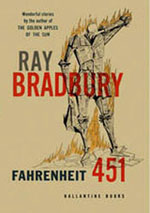
Ray Bradbury really needs no introduction. He is the Venice author of all time. In his 1953 book, Fahrenheit 451, about a future in which a totalitarian government has banned the written word, he stated "In all the years from 1941 to the spring of 1950, I had done most of my typing in the family garages, either in Venice, California (where we lived because we were poor, not because it was the "in" place to be) or behind the tract house where my wife, Marguerite, and I raised our family." This Venice residence would be the one located at 662 South Venice Blvd, where he lived "with his parents from 1942-47. Here he wrote many of the stories that would become The Martian Chronicles, 1950, establishing his position as one of the world's most beloved and dynamic writers." So stated the commemorative bronze plaque installed on the now-demolished home front. A sad loss for Venice. Yet, a worthwhile mention of our proud, inspiring city. Anyway, we'll get back to Ray later.
So, for your wintertime edification, following are snippets from novels set in or about Venice, from 1954 til 2006. These are not all, I'm sure, that are available out there, but at least enough for you to enjoy, along with me again. Happy reading...
...............
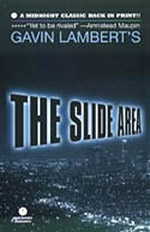
Gavin Lambert was a British-born screenwriter, novelist and biographer who lived for part of his life in Hollywood. In 1954, his book, The Slide Area, contained a great perception of Venice in the early 50s:
She lives in Venice, near the furniture store. A mouldering unfinished little town along the coast beyond Santa Monica, it began fifty years ago as an imitation of the Italian city. Moonstruck, an industrialist from the Middle West decided to create a romantic resort on the dreary tidal flats. He built some florid villas, a copy of St. Mark's Square, a network of bridges, canals, lagoons, colonnades. The aged Sarah Bernhardt was imported to play La Dame aux Camélias on what is now a tawdry, neglected amusement pier. Hardly anyone went to see her. Hardly anyone hired a gondola for a trip along the mosquito-ridden flats. Then oil was struck, machinery converged upon the lagoons. A few bridges still remain, spanning dried up canals, with pumps and derricks stretching away beyond them. Drugstores, banks, service stations have settled in the empty spaces between colonnades, and the villas are apartment houses with rooms always vacant.
As we pass St. Mark's Square, I notice a group of young motor cyclists dressed in black, with tight belts and slanted caps, leaning against the colonnades. Pigeons cluster nearby, then disperse as the cyclists set off with a roar, speeding along the empty boulevard, past a neon sign announcing BEER, past the Bridge of Sighs and the derricks in silhouette.
The noise rouses Zeena. She blinks, looks out of the window and recognizes landmarks: a closed-up hotel with broken windows, a plot of waste land with an abandoned moonlit sign, BOATS FOR SALE. She murmurs: 'Why, I'm almost home!'
...Further along the beach, someone was playing bongo drums. People drifted towards him. Mark listened for a moment, digging his toes into the sand. 'I landed up as a barman,' he said. From the first moment, wearing a uniform and a collar and tie round his neck, it was like being in prison. Instead of the sun, there was dim concealed lighting and artificial coolness. He thought most of the customers looked pale and was frightened he would soon be the same. His tan was definitely not as deep.
'They've given me a little room at the back of The Place. But not for long, because it's in the old part of the building and it's due to be pulled down.'
...
Summer is always reluctant to go. Sometimes it makes a false departure and comes back for Christmas. For a few weeks now, signs have presaged the end. One night it rains gently. A wind from the ocean swiftly wraps a sparkling afternoon in fog. Electric storms break out over the desert at night, salvoes of thunder are heard and prongs of lightning flash like exclamations in the sky. Every day at the beach, the young lifeguards sit in their towers. By the end of summer they are deeply tanned, yet somehow autumn creeps into their eyes. Each time they scan the ocean with its swimmers waiting for surf to ride, it seems like a last glance before saying good-bye.
While summer fades, the city still spreads and grows. Much of the growing you wouldn't notice. You pass a truck in the night, drawing a new frame-house; there are always plenty of these, set down and lost in the general sprawling pattern. But sometimes a landmark disappears, like the old pier between Santa Monica and Venice. Replacing the shabby arcades of obsolete peepshows and makeshift booths is a bright new pleasure-cape, clean and synthetic. Neptune's sculpture presides over an artificial lake with coloured fountains and large aerated bubbles. Walk past it while the music plays, taking the moving stairway that lifts you above treelike chandeliers with outstretched branches of light, and step into an elevator. It doesn't move, but in the centre of it a transparent column fills up with water, to make you think you're going beneath the sea. You find yourself in a vast dim cavity called Neptune's Kingdom. You walk round a tank with glass walls. It represents the ocean bed, but there is no water, only an illusion created by the play of light. Stuffed barracudas and other outsize creatures spin slowly round on wires. Neptune watches from his throne. Coral, marine growths and shells, all too brightly tinted, litter the depths. Less than half a mile away from this dry electrical kingdom is the Pacific itself, pale and streaked with patches of seaweed. At this moment it is secretly swallowing up ton after ton of disinfected garbage.
For other kingdoms have been created. Beyond Venice, there used to be a desolate stretch of sand dunes and waste ground, planted here and there with oil derricks. Then came a regiment of black squat cylindrical tanks. The face of the landscape changed; factory chimneys, scaffolding, machinery, wire fences, converged upon the empty beaches. Everything feels silent, looks unattended, but inside the tanks the city's garbage is being chemically purified, then rushed along an underground channel and poured into the ocean.
So the refuse is purified and pumped; the lifeguard watches from his sunny tower; stuffed fish ponderously circle in a waterless cage; and, in his frame-house, a man wakes up to find he has a neighbor.
...............
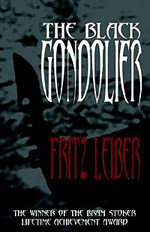
Many of author Fritz Leiber's most-acclaimed works are short stories, especially in the horror genre. Due to such stories as The Girl With the Hungry Eyes and You're All Alone, aka The Sinful Ones, he is widely regarded as one of the forerunners of the modern urban horror story. His 1964 tale The Black Gondolier, about the diabolic plans for humanity being hatched by petroleum, shows another gritty side of that beat Venice back then:
And of course the Grand Canal is pretty dismal these days, with its several gracefully arching Bridges of Sighs raddled with holes showing their cement-shell construction and blocked off at either end by heavy wire barricades to keep off small boys, and with both its banks lined with oil wells, some still with their towering derricks and some--mostly those next to beach side houses--with their derricks dismantled, but all of them wearily pumping twenty-four hours a day with a soft slow syncopated thumping that the residents don't hear for its monotony, interminably sucking up the black petroleum that underlies Venice, lazily ducking and lifting their angularly oval metal heads like so many iron dinosaurs or donkeys forever drinking--donkeys moving in the somnambulistic rhythm of Ferde Grofe's Grand-Canyon donkey when it does its sleepy hee ... haw. Daloway had a very weird theory about that--about the crude oil, I mean--a theory which became the core of his dreads and which for all its utter black wildness may still best explain his disappearance.
And La Gondola Negra is only a beatnik coffee house, successor to the fabulous Gashouse, though it did boast a rather interesting dirty drunken guitarist, whose face always had blacker smears on it than those of his stubbly beard and who wore a sweatshirt that looked like the working garment of a coal miner and whom Daloway and I would hear trailing off (I won't venture to say home) in the small hours of the morning, picking out on his twangy instrument his dinky "Texas Oilman Suite", which he'd composed very much in imitation of Ferde Grofe's one about the Grand Canyon, or raucously wailing his eerie beatnik ballad of the Black Gondola. He got very much on Daloway's nerves, especially towards the end, though I was rather amused by him and at the same time saw no harm in his caterwauling, except to would-be sleepers. Well, he's gone now, like Daloway, though not by the same route ... I think. At least Daloway never suggested that the guitarist was one of their agents. No, as it turned out, their agent was a rather more formidable figure.
And they don't call the plaza St. Mark's, but it was obviously laid out to approximate that Adriatic-lapped area when it was created a half century ago. The porticos still shade the sidewalks in front of the two blocks of bars and grimy shops and there are still authentic Venetian pillars, now painted salmon pink and turquoise blue--you may have seen them in a horror movie called Delirium where a beautiful crazy slim Mexican girl is chased round and round the deserted porticos by a car flashing its headlights between the pillars.
And of course the Venice isn't Venice, Italy, but Venice, USA--Venice, California--now just another district and postal address in the sprawling metropolis of Los Angeles, but once a proud little beach side city embodying the laughably charming if grotesque dream of creating Venice, Italy, scaled down but complete with canals and arched bridges and porticos, on the shores of the Pacific.
Yet for all the childish innocence of its bizarre glamor, Venice developed an atmosphere, or became the outpost of a sinister deep-rooted power, that did in Daloway. It is a place of dreams, not only the tinseled ones, but also the darker sort such as tormented and terrified my friend at the end.
For a while toward the beginning of this century the movie folk and real estate agents and retired farmers and the sailors from San Pedro went to spanking-new Venice to ride the gondolas--they had authentic ones poled by Italian types possibly hired from Central Casting--and eat exotic spaghetti and gambol romantically a bit with their wide-hatted long-skirted lady friends who also wore daring bathing suits with bare arms and rather short skirts and long black stockings--and gamble too with piled big yellow-backed green bills--and, with their caps turned front to rear, roar their wooden-spoked or wire-wheeled open touring cars along the Speedway, which is now a cramped one-way street that changes direction every block.
But then Redondo and Laguna and Malibu called away the film folk and the other people with fat pocketbooks, but as if to compensate for that they struck oil in Venice and built wells almost everywhere, yet despite this influx of money the gambling never regained its éclat, it became just bingo for housewives, and the Los Angeles police fought that homely extramural vice for a weary decade, until sprawling LA reached out a pseudopod one day and swallowed Venice up. Then the bingo stopped and Venice became very crowded indeed with a beach home or a beach apartment or a beach shack on every square yard that wasn't sidewalk or street--or oil well!--and with establishments as disparate as Bible Tabernacle and Colonic Irrigation Clinic and Mother Goldberg's Home for the Aged. It would have been going too far to have called Venice a beach slum, but it was trending in that direction.
And then, much later, the beats came, the gutter geniuses, the holy barbarians, migrating south in driblets from Big Sur and from North Beach in Frisco and from Disillusion, USA, everywhere, bringing their ratty art galleries and meager avant garde bookstalls and their black-trousered insolent women and their Zen and their guitars.
...............
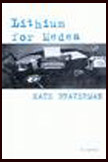
Kate Braverman wrote Lithium for Medea in 1979, a powerful and poetic exploration of drug addiction and the ties that bind dysfunctional families. A native Angeleno, now living in San Francisco, she dynamically evokes the disaffected atmosphere of 1970s Venice and its canals through the purity of her language...
I cut west and south down side streets, hardly seeing the road, running through stop signs and red lights to the ragged western fringe of Los Angeles called Venice, where I live. Here the city stops its white cement sprawl, its hunger to engulf the whole earth under tons of trucked-in concrete. Here in the lap of the blind blue-eyed Pacific, Los Angeles is stopped dead by the sheer liquid cliffs of the sea. Here the trail ends. After Death Valley and Donner Pass, there is only this last precarious oasis....
Once Venice was the summer resort of the first Los Angeles affluent, St. Louis and Chicago bankers and developers who pushed across the continent armed with the promise of an ever expanding manifest destiny of the soul. They built wood-slatted houses in a pocket of land facing the Pacific, ground webbed with canals. Perhaps the canals were filled with sea water then and the boulevards did not yet exist and one could simply swim home from the ocean. Perhaps there were families then and homes to return to at dusk.
Now the original houses of the Venice canals sag, paint peeling, reds a faded rust, yellows and blues bleached, a noncolor, not even a suggested pastel. There is a sense of abandonment. Deserted cars sit useless in weeds, looted, their vital organs gone. A shell of a canoe and a shell of a gutted speedboat stretch out like lovers in the field where two canals meet. Broken stuffed chairs rot under the sun. Old screens with the wire mesh ripped lie in random stacks between houses.
These are growing ruins. For decades the dirt has done as it pleases, pushing up what the winds brought, what a hand tossed. Here, where it is always some form of summer, everything grows swollen, enormous, oblivious to proportion. Early roses bloom in front yards on Carroll Canal. Honeysuckle spills over the wire fence of the house next door. Walls of red hibiscus hide windows. Lemon trees are opening up, stiff yellow. The sunflowers are higher than my shoulders, stalks thick as young trees. Soon the canals themselves will disappear, drained and filled to accommodate condominums. As it is, few of the original dwellers remain. Jason and I are among the last.
Jason has lived on Grand Canal for twelve years. He owns his two-story red house. And he owns the house I live in on Eastern Canal, four city blocks away, four canals from him.
Jason came to own these houses because he had a vision. He was living on the streets of Venice in the early sixties, living as it was easy to do then, sleeping on the beach and subsisting on peaches and oranges picked from trees. He didn't need to eat much. He was an amphetamine addict, a character known on the boardwalk, a too thin, small man with a nervous energy, talkative and curious, wandering the beach with a sketchbook, drawing faces and the ornate fronts of old buildings. One summer night on LSD with the sea at his back, Jason listened as a man spilled out enthusiasm for the new society. There would be great changes, a vast movement of people, social upheaval and revolution.
Jason was impressed by the stranger. There were new bodies on the beach now, long-haired men and women with sleeping bags and packs on their backs and a look of odyssey etched across their faces. Jason didn't know why they were coming to California. They could come to pan gold for all he cared. Still, they were coming. And, with his mind reeling and his eyes jammed wide open, he suddenly realized they would need somewhere to live. In the morning, Jason began looking at property.
He borrowed money. He began wheeling and dealing. By 1969, Jason owned a dozen houses and five apartment building on the streets closest to the sea.
My house is set back from Eastern Canal behind twenty-foot-high hedges of pink and white oleander. From the poor rut of broken sidewalk a passer-by could see only a thin sliver of the second story. On the side of my house, two peach trees and a lemon tree sleep near the windows. Bougainvillaea hangs heavy across the front porch with its wood deck and one old rattan chair where I often sit and watch the canals, watch the lime-green algae near the bridge, the black-and-white ducks, the brown-speckled ducks with yellow beaks, push through the palm trees reflected in the water.
I study the canals because they have their own unique life cycle. In the early mornings when the sun is still pale and tentative, still wrapped in night haze, the canals are the color of a mirror, a delicate silver. As the sun anchors itself in the center of the sky for the long yellow noon, the canals thicken. This is the yellow of a mouth of sharp, pronged stained teeth, teeth yellow from grinding something unmentionable, something like bone. The water is coated then, somehow greasy and superimposed, not really like water at all.
In the later afternoons, when the sun is fatigued and indifferent, sensing loss and preparing for surrender, the water is clearly liquid again, but pitted with shadows. This is the season of sunset. The sun suddenly regathers itself for the final battle. It forms one perfect red ball and hangs smack above the ocean, a gouged eye, a beach ball dropped down into the slow stirring night waves of hungry fish mouths and darting crepe-thin fins.
At sunset the canals are streaked as the sky, fierce reds and oranges, thick, the color of lava. The canals assume a new texture then, something like boiling metal. I stand stock still in my garden, watching sunset across the surface of the water. I don't have to look at the sky at all. I sense the sun sucking in its last breath, preparing for the plunge. I know this sun. It sits above me, a monk in red robes, a suicide serene at the immolation.
Night rises imperceptibly. There is a slow darkening, and abundance of fast-darting shadows. This is the hour when shadows feed beneath the wooden bridges. Plants begin to sway and nod in perfect agreement. They brush slatted leaves like tongues sucking at one another. They are plotting.
Someday they will find the sun's secret sleeping place. Vines will reach out and branches lock in an intricate embrace. The sun will be caught and bound to the ground. In time, a great new mountain will form. And only the trees and plants silently rustling and nodding their shadowy mongoloid heads will be able to see in the forever darkness to come.
There is night, the final season of the canals. The night is laced with sea salts. The air stings. The night is a terrible season, even when it is wrapped in a luminous grayish fog thick as the breath of condemned men.
Night is a kind of metal. Nothing stirs, not even shadows. The ducks grow quiet. One can't see the bottles that float in the water, the tossed-away pieces of old tires, the gray clutter of newspapers and plastic wrappers that stay on the surface for days like a species of mutant flower. Dogs begin to bark. It is time to wait for Jason.
Sometimes Jason will cross the Grand Canal bridge and then the bridge over Carroll Canal and Linnie Canal and Howland Canal and, finally, the bridge near my house on Eastern Canal. Sometimes I watch Jason zigzagging toward me, kicking beer cans from the eroded sidewalks into the blackening water. Sometimes Jason will come to me in his yellow paddle boat. I can hear him humming as he ties the boat to the wooden spoke he drove into the side of the canal in front of my house, the pillar he insists on calling a dock. Sometimes I will weave my way across the bridges to Jason's house. And sometimes we don't see each other at all.
I might wake up with Jason, at my house or his house... When I wake up it is the first or second season of the canals then, the pale mirrory unsubstantial silver of early morning or the thick yellow of noon....
It was night, definitely night. The shadow battle had ended. The sun climbed back into the Santa Monica Bay. The sun was a useless thing lying on the cool sandy ocean floor, eyeless and poisoning fish.
I turned on lights, trying to obliterate the night. I walked through the rooms of my house, where I have lived six years watching the special seasons of the canals, the silver and grease-yellow, the abundant and quick-tongued shadows, the gray fog and sullen thickening brown edging into ink. For six years I have witnessed the water in front of my house, now churning, now changing, completing some cycle meaningful only to itself....
After what seemed a suitable passage of time, I wound my way across bridges and eroded pavement to Jason's house. In places, the sidewalk dipped down to mud or narrowed to a dirt trail. I pushed palm fronds back with my hands. I crossed an alley littered with parts of bicycles, pieces of stained rugs and piles of rusty nails glistening like red worms in the moonlight. The sky and water were an identical shade of deep purple, perfect mirrors. A thin haze was low in the sky and drifted across the cool water, a soft gauze.
...............
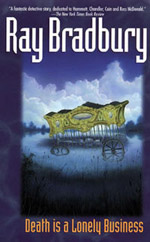
In 1984, Ray Bradbury wrote his 34th novel, Death Is A Lonely Business. It's a story, set in 1949, about a series of murders that happen in Venice, then a declining seaside community of intrigue, based on his childhood recollections of his youth spent among the shadows and murky canals in the early 1950s. Here's how it starts:
"Venice, California, in the old days had much to recommend it to people who liked to be sad. It had fog almost every night ...and the slap of dark water in the canals and the hiss of sand against the windows of your house when the wind came up ... along the empty walks.
At the end of one long canal you could find old circus wagons that had been rolled and dumped, and in the cages, at midnight, if you looked, things lived; and it was all the circuses of time somehow gone to doom and rusting away.
How the lion cages got in the canal no one knew.
But there they were, the canals and, at the end of one, ...the ancient circus wagons and cages, flaking their white enamel and gold paint and rusting their thick bars.
A long time before, in the early Twenties, these cages had probably rolled by like bright summer storms with animals prowling them, lions opening their mouths to exhale hot meat breaths. Teams of white horses had dragged their pomp through Venice and across its fields.
Now all that remained of the old parade had ended here. Some of the cage wagons stood upright in the deep waters of the canal, others were tilted flat over on their sides and buried in the tides that revealed them some dawns or covered them some midnights. Fish swarmed in and out of the bars. By day small boys came and danced about on the huge lost islands of steel and wood and sometimes popped inside and shook the bars and roared."
...............
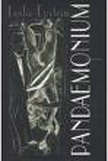
Leslie Epstein, a local native, has written nine novels including Pandaemonium, 1997, and San Remo Drive: A Novel from Memory, 2004, based on his childhood growing up in Hollywood in the 1940s and 50s.
Pandaemonium is the definitive novel of Hollywood in its most glamorous era, a work that examines the very roots of film itself, and its hold upon the dark, underground forces of instinct and imagination:
At long last my racing thoughts caught up to the present: the evening of December 23, 1940. Rudolph Von Beckmann was having a party at his house in Venice - not the one in Italy, the one in California. He had invited several of us from Granite Films for a late-night meal. Miss Hudson and I (Peter Lorre) had driven to the beach together in her green Plymouth coupe. We parked on Ozone Avenue and walked by the sagging houses - they looked as if they were made of little more than tarpaper and wood - that lined both sides of Speedway. Von Beckmann's place was more substantial, three stories of brick with curtains at the windows. When we rang the bell, the host himself ushered us into the foyer. ...
In the shocked silence that followed it was possible to hear, through the open window, from the nearby beach, the thump of the breaking waves and even the kiss of the foam as one after the other they expired upon the sand. The tide, it seemed, was rising. ...
Immediately after leaving Rudi's house on Speedway, I'd trotted back toward Ozone Avenue. My hope was to intercept Rochelle Hudson before she could drive away. But to mixed feelings of relief and dismay, I found that the little green Plymouth was parked where we had left it, with no sign of the actress anywhere about. I retraced my steps along Speedway, past Navy and Kinney and Ashland, toward Ocean Park Pier. The bright lights of the concessions blinked up ahead. Crowds were pouring out of the late-night shows at the Rosemary Theater and the Dome.
"Miss Hudson!" I called, standing on tiptoe. "Where are you?" I trotted along the boardwalk, with it honky-tonk attractions: the Skee-Ball machines, the rolling barrel, the House of Mirrors. I passed the merry-go-round, a whirl, in reflecting mirrors, of color and light. The music in the center came from real instruments, piccolos and trumpets and cymbals, played by unseen musicians, like a band in a picture by Disney. The triple thump of the drum echoed the boom-boom-boom of my own troubled heart. Next was the penny arcade, where a brown wooden gypsy in a glass cage promised over and over to tell my fortune. I tarried a moment, watching a boy in short pants attempt to grasp, also over and over, a wristwatch in the fingers of a mechanical claw. ...
Her laughter rang out over the boardwalk. It drowned out the sound of the sideshow barkers and even the screams from those coming over the top of the loop-the-loop. It rang in my ears, piercing and high, indistinguishable, finally, from that of the mechanical woman who screeched endlessly in front of the House of Mirrors.
...............
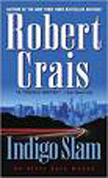
Robert Crais, a native of Louisiana, grew up in a blue collar family of oil refinery workers and police officers. He purchased a secondhand paperback of Raymond Chandler's, The Little Sister, when he was fifteen, which inspired his lifelong love of writing, Los Angeles, and the literature of crime fiction.
Upon the death of his father in 1985, Crais was inspired to create Private Investigator Elvis Cole, using elements of his own life as the basis of the story. Elvis Cole and his intimidating associate Joe Pike always end up solving their immediate problems, but there's a reoccurring storyline that keeps them coming back for more. Crais, in his 1997 book Indigo Slam, puts Cole on the track of a missing father who seems to have criminal connections:
He put Charles on the line, and I told him that everything would be fine. I told him to stay calm, and to trust that Joe and I would bring him home. Dobcek came back on the line before I was finished. "You know the bookstore they have there?"
"Yeah." Small World Books.
"Wait on the grass across from that. We come to you." Then he hung up...
We used the freeways to get to Santa Monica, then turned south along Ocean Boulevard, riding in silence until we came to Venice. Pike turned onto a side street and stopped. He said, "What's the deal?"...
I climbed behind the wheel, and at nine forty-two, I left Pike's Jeep illegally parked in a red zone behind the Venice boardwalk. "Let's go."
I led Clark along the alley to the boardwalk, and then to the bookstore. It was a bright, hazy day, just on the right side of cool. Street people were already up and walking their endless laps of the boardwalk, and shop merchants were hawking tattoos and sunglasses to tourists come to see what all the excitement was about. Tall palms swayed in the breeze. Joggers and Rollerbladers and male and female bodybuilders with great tans moved through the streams of people with practiced indifference...
The bookstore had just unlocked its doors, and a dark-haired woman with glasses was pulling a wire magazine rack onto the walk. I walked Clark into the store and told him to wait inside with the bag and watch me through the window. I told him not to come out until I waved for him. The dark-haired woman eyed us suspiciously. Probably thought we were shoplifters.
I walked back across to the grass and waited. Three homeless men were lying on the grass there, one of them holding a fat dog. The man with the dog looked at me, and said, "Spare any change?"
"Sorry."
"Don't be cheap. It's for the dog."
I shook my head. "No change."
The man smirked at his friend. "Cheap."
I looked along the boardwalk first one way, then the other, then along the beach behind me, and into the parking lots and alleys, just another guy hanging around on the boardwalk wondering if he could get his gun out in time to save Clark Hewitt's life, not to mention his own. I eyed the fat dog. "Looks like he could use a little exercise."
The homeless man was affronted. "Mind your own goddamned business." So much for small talk.
...............
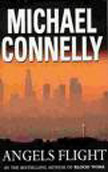
At age 11, Michael Connelly moved with his family from Philadelphia to Fort Lauderdale, Florida. He eventually worked his way up to an impressive job on the crime beat for the Los Angeles Times. In 1992, after three years there, Connelly began writing his first novel to feature LAPD Detective Hieronymus Bosch, his tough, moody Hollywood detective. So far, there's been 14 books with Harry Bosch's name written all over them.
In 1999's Angels Flight, the body of a high profile black lawyer is found inside one of the cars on Angels Flight, a cable railway in downtown L.A., but there's not a detective in the city who wants to touch the case. So Detective Bosch is put in charge:
"This kid lived over in Venice and when we went to pick him up he saw us coming. Fired a three fifty-seven through the front door after Frankie knocked. Missed him by an inch. Frankie had longer hair back then. The bullet actually went through his hair. The kid went through the back door and we chased him through the neighborhood, calling for backup on our handhelds as we ran. The radio calls brought the media out - helicopters, reporters, everything."
"You got him, right? I remember."
"We chased him almost all the way through Oakwood. We finally got him in an abandoned house, a shooting gallery. The hypes went scattering and he stayed inside. We knew he had the gun and he had already taken a shot at us. We could've gone in there and blown his shit away and there wouldn't have been a question. But Frankie went in first and talked the kid out."
...............
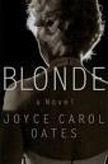
In 2000's Blonde, Joyce Carol Oates, one of America's most distinguished writers, reimagines the inner, poetic, and spiritual life of Norma Jeane Baker - the child, the woman, and the fated celebrity (Marilyn Monroe):
There was a day, it was Norma Jeane's sixth birthday, the first day of June 1932, and a magical morning it was, blinding breathless whitely dazzling, in Venice Beach, California. The wind off the Pacific Ocean fresh and cool and astringent, smelling only faintly of the usual briny rot and beach debris. And borne, it seemed by that very wind came Mother, who came for Norma Jeane where she was living with her grandparents in a pockmarked old ruin of a beige stucco building on Venice Boulevard... the third-floor apartment reeking with onions, lye soap, and bunion ointment, and Grandpa's pipe tobacco.
She would marry him (Cass Chaplin), she would have his baby, she would live with him and for him forever afterward in Venice Beach, for instance. In a small stucco house overlooking a canal.
In the dream she had permission to laugh. To run along the beach barefoot and laughing. (Was this Venice Beach? But not Venice Beach now. Venice Beach of long ago.) Grandma Della was there, wind whipping her hair.
Was it Venice Beach she'd come to? She knew without seeing... It was Venice Beach, the ribbed hard-packed sand and gusts of mist like veils and seaweed like drowsing eels and the first of the surfers strange and silent, too, like sea creatures, streaming water, staring at her. Somebody had torn the front of her cerise chiffon dress, her breasts hanging loose. Nipples hard as pits...
Later, she'd driven to Venice Beach. She would recall her bare foot on the gas pedal, and searching for the brake. But where was the clutch? She'd abandoned the scraped and overheated Bentley on Venice Boulevard, keys in the ignition. On foot, then. Barefoot. Running. She wasn't frightened but exhilarated, running. The front of her pretty dress had been torn. The bearded derelict's rough hands. Now this stretch of beach was home, at dawn. For Grandma Della lived close by. She and Norma Jeane walked along the beach shading their eyes against the bright glittering waves. She ran into the surf, the first of the waves, always you're surprised at the strength of the surf, the chill of the waves. Water is so thin, trickles through your fingers, how can it be so strong, so hurtful? She ran stumbling and staggering into the water and waves socked at her calves, thighs, belly. These were no loving caresses but powerful blows. She was knocked down, and scrambled to get up. She'd begun to hyperventilate. Not enough oxygen. She was swallowing water. Water up her nose.
Surfers saved her from drowning. Just her luck, it was this stretch of Venice Beach where a half-dozen surfers hung out. Some of us even slept on the beach, mild nights. We were fully awake and in the water by dawn riding some rough, serious waves. And there came this distraught-looking blond woman in a torn party dress staggering along the beach. Barefoot, and her hair windblown.
She'd begun to take yoga classes. Sometimes, those endless nights when she knew she could not allow herself to swallow enough chloral hydrate to put her to sleep for more than a few hours, she called a masseur who lived in Venice Beach. In her imagination he was one of those surfers who'd saved Norma Jeane from drowning a long time ago. A giant, a bodybuilder. But gentle.
I ran along the beach barefoot & my hair whipping in the wind.
It was Venice Beach, it was early morning, I was alone &
the burning Princess was dead.
& I was alive.
...............
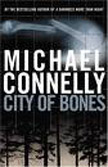
Back to Harry Bosch again. City of Bones, 2002, the eighth Bosch title, finds Michael Connelly again producing a propulsive thriller set in the moral murk of detective-story L.A. His latest adventure is as dark and angst-ridden as any of Bosch's past outings. This time, he's working to identify a child's skeleton, buried for 20 years, which comes to represent much of what he sees as evil in his city:
Not all of the dreamers drawn to Los Angeles came to make movies. Venice was the century-old dream of a man named Abbot Kinney. Before Hollywood and the film industry barely had a pulse, Kinney came to the marshlands along the Pacific. He envisioned a place built on a network of canals with arched bridges and a town center of Italian architecture. It would be a place emphasizing cultural and artistic learning. And he would call it Venice of America.
But like most of the dreamers who came to Los Angeles his vision was not uniformly shared or realized. Most financiers and investigators were cynical and passed on the opportunity to build Venice, putting their money into projects of less grand design. Venice of America was dubbed "Kinney's Folly."
But a century later many of the canals and the arched bridges reflected in their waters remained while the financiers and doomsayers and their projects were long swept away by time. Bosch liked the idea of Kinney's Folly outlasting them all.
Bosch had not been to the canals in many years, though for a short period in his life after returning from Vietnam he had lived there in a bungalow with three other men he knew from overseas. In the years since, many of the bungalows had been erased and modern two- and three-story homes costing a million dollars or more had replaced them.
Julia Brasher lived in a house at the corner of the Howland and Eastern canals. Bosch expected it to be one of the new structures. He guessed she probably used her law-firm money to buy it or even build it. But as he came to the address he saw that he was wrong. Her house was a small bungalow made of white clapboard with an open front porch overlooking the joining of the two canals.
Bosch went down the porch to the sidewalk next to the canal. He looked at the reflection of the lights of all the houses on the water. An arched footbridge, lighted by the moon and nothing else, crossed the canal twenty yards away, its reflection perfect on the water...
Before dawn Bosch was on the road. He left Julia Brasher sleeping in her bed and started on his way to his home, after first stopping at Abbott's Habit for a coffee to go. Venice was like a ghost town, with the tendrils of the morning fog moving across the streets.
...............
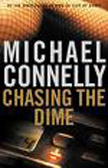
2002 was a fruitful year for Michael Connelly. That year he also published Chasing The Dime, a story about a scientist trying to start his life anew, among a nighttime world of escort services, websites, sex, and secret identities. And then Henry Pierce has to risk his life for a woman he's never met:
The address Lilly Quinlan had given was a bungalow on Altair Place, a block off the stretch of stylish antiques stores and restaurants on Abbot Kinney Boulevard. It was a small white house with gray trim that somehow made Pierce think of a seagull. There was a fat royal palm squatting in the front yard.
The yard and ornamentation were neatly trimmed. But if it was a rental, that could have been taken care of by a landlord. There was no car in the driveway or in the open garage in back and no newspapers piling up near the curb.
At 12:30 the presentation ended and they broke for lunch in the boardroom. Condon had arranged for the meal to be catered by Joe's, a restaurant on Abbot Kinney that had the rare combination of being a hot place and also having good food.
Breeze was one of the Venice walk streets, which meant Pierce would have to get out of his car to get close to it. In several neighborhoods near the beach the small bungalows were built facing each other, with only a sidewalk between them. No streets. Narrow alleys ran behind the houses so owners had access to their garages. But the fronts of the homes bordered the shared sidewalk. It was a distinct plan in Venice, a design to promote neighborliness and at the same time put more homes on smaller parcels of land. Walk street houses were highly prized.
Pierce found a parking space at the curb on Ocean near the hand-painted war memorial and walked down to Breeze. It was nearly seven o'clock and the sky was beginning to acquire the burnt-orange color of a smoggy sunset. The address he had gotten was halfway down the block. Pierce strolled along the sidewalk like he was on his way to the beach for the sunset. As he passed 909 he nonchalantly took a look. It was a yellow bungalow, smaller the most of the others on the block, with a wide front porch with an old glider seat on it. Like most houses on the block, it had a white picket fence out front with a gate.
...............
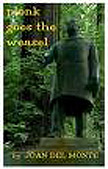
Joan Del Monte, a resident of the Venice canals, is a multi-faceted writer, teacher, lecturer, radio commentator and entrepreneur. In her 2003 book plonk goes the weasel, she does a concise telling of our town's history:
Venice, California, was built by Abbot Kinney, a dreamer and heir to the Sweet Caporal cigarette fortune, who decided to reproduce the Italian City on the mud flats of Southern California. With time, the canals silted in and oil companies killed the area for residential use by festooning it with working oil rigs. Mornings you could smell the canals from the dead fish. The beats arrived in the 60's to live in the cheap rents. Something about being next to the water; something about the way the light glanced off the waves, made people see things different.
Herb Boland's apartment took up the ground floor of what had been a two story one family house on a Venice walk street. The original dining room had a wood burning fireplace faced with stream-rounded boulders. The fireplace was why Boland rented the apartment and it made up, in his mind, for the inconvenience of having to sleep in the glassed-in front porch.
Boland was fond of telling colleagues that he got in a bathing suit on Friday at 6 p.m. and stayed in bathing suits until Monday.
...............
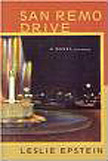
For Leslie Epstein, a follow-up mixture of personal Angeleno history and creative novelistic fabrication, San Remo Drive is a revelatory excursion through an experienced past using memory as guide. This 2003 novel takes one back to Hollywood in the early 1950s, when reality was manufactured and characters were larger than life:
Back to the Pacific Coast Highway. Through Santa Monica and Ocean Park. Before Venice Pier I cut over to Speedway and right on 29th Avenue, where I parked the car. Bartie lived in one of the old houses whose windows had untended geraniums drooping from the ledges and shutters either unslatted or askew. The doorbell, I knew, was broken. I edged down the alley to the rear. Ordinarily, he'd be sitting there, puffing his Kools and piling up the pages of his manuscript.
"Hey, Bartie," I called, over the pointed staves of the backyard fence. "You there?"
No answer. I moved to the wooden gate, which was askew. I stepped through it into what might have been a botanical garden. The walls were covered with mosses, with grape fern and lady fern, like some vision of the Old South. There was a pepper tree in the center, just like the one we'd had on San Ramo. Bartie had set up three pools, with little bridges and little boats. I glanced down at the gulping carp. Gladiolas, iris, larkspur - I couldn't remember the names of all the flowers. Snapdragon, I thought. Naturally, there was an iron Buddha, smiling and serene, his upturned hands on his knees. What the hell? I touched his nose for luck....
I started off toward the beach at a trot. By the time I crossed Speedway I was running. A rusted lamp led to the sand; I clanged down it. The beach was deserted. The sun, like a blacksmith's ingot, was plunging into the bucket of the Pacific. A gull flew seaward, seeming to pull behind it the black curtain of night. I could see, far out, like a line of chalk, the row of breaking waves....
Suddenly, off to the south, a thousand lights went on: Venice Pier. Is that where they'd gone? Out to the pilings? But these days there was nothing to attract them. They'd long since torn down all the amusements, the Giant Dipper, the Some Kick Coaster, and the Noah's Ark Funhouse, which had giraffes in the windows and rocked like a boat. There were only fishermen now.
...............
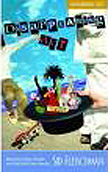
Sid Fleischman is a longtime resident of Santa Monica, and a Newbery Medal-winning author of children's books. In his 2003 book, Disappearing Act, a young brother and sister on the run from a mysterious stalker find refuge and rescue among the eclectic and eccentric characters of Venice Beach:
I'd have called ourselves the Draculas or Svengalis or something to really confound the Toad. Not that he could have a clue that we have washed up in Venice, California.
We sleep for twenty-four hours or so and then find a room to rent. It's in an old beach house all buttered yellow by the sun. It looks friendly. It isn't home with a room of my own, but it will do.
The patio is walled in with blue Mexican tiles and actually has an avocado tree growing in the middle of it. With actual avocados hanging on it. Red flowers climb over the roof like a prairie fire. If that house could talk, I think it would speak Spanish. It's called Casa de Sueños.
Finding lunch along the beach was easy. The cement boardwalk was crowded tight with ramshackle taco joints and henna tattoo parlors and hamburger stands and tarot card readers under beach umbrellas.
We dined like the natives, standing up eating Mexican, and watched the Saturday crowds sauntering by, thick as schools of fish. Almost everyone wore shorts or Levis and looked as if they came from somewhere else, like us.
As we wandered along the boardwalk, Holly found a job in about a minute and a half. She saw a sign that said HELP WANTED. The suntanned guy running the jewelry stall was so sweaty, he looked dipped in bacon fat. He checked her feet and said sure, you're hired, kid.
He gave her silver rings to slip on her toes. All she had to do was sit on a high stool under a sign that said TOE RINGS and show off her foot jewelry to the passing tourists. She didn't exactly stop traffic, but it was seven dollars an hour.
I continued along the boardwalk alone and wasn't too surprised to spy out the garbage juggler. He had an open spot between a fire-eater and a lady who'd write your name on a grain of rice for ten dollars.
We had plenty of time to explore around, especially canals behind the beach area. Some real-estate man had had them dug about a hundred years ago so he could sell house lots on the water. Now the canals looked like flooded streets with narrow cracked sidewalks. Small wooden houses were crowded along the banks. But there were some grand homes, too, and we'd heard some movie stars lived there.
The house on the canal seemed right out of the Grimms' fairy tales. It had turrets that looked like red onions and rounded windows and a porch all hung with wooden lace.
But fortune-tellers all along the boardwalk were as common as hamburger joints. Most of them sat shuffling tarot cards under signs hung about, proclaiming they knew all and told all.
So I stopped in front of an old lady named Princess Zulisa. If anyone could see into the future and teach me what to say, it had to be Princess Zulisa.
I sat down at her card table and she handed me her deck of cards. They were covered with brightly colored pictures of old-time knights and moons and queens and jesters and stars and whatnots.
Then he turned right on Windward. I followed him past the neon-lit Tattoo Asylum and the dusty parked cars. He turned into the big white Marina Pacific Hotel.
...............
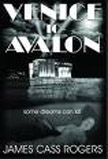
James Cass Rogers' 2004 Venice To Avalon is filled with factual events and historical trivia. In it, a costume designer dreams of an actress murdered in the '30s and sets out to solve the case, in a cavalcade of mesmerizing events:
Everyone on the trolley is having such a good time. Couples smooching, heading to the amusement piers for a night of fun. And I'm all alone.
Two transfers later, I get off at Venice Pier. It's cooler by the water and I'm glad I dressed warm. All the lights of the midway are on and it looks like a fairy land. My spirits pick up. Carny and me used to love walking this boardwalk, holding hands, eating cotton candy and talking of making it big. Dreams of a couple of innocent kids.
The boardwalk is jammed, music everywhere and the smell of deep fried corn dogs and onion rings. Out in the water, all the carnival rides on the pier are lit up like castles and turrets with strings of lights outlining everything, the roller coasters, dance halls and swimming pavilions like everything was from the Arabian nights. Everywhere couples stroll. Laughter and good times for all.
Katherine got up early and drove to Venice, taking Venice Boulevard the whole way to the beach. At the beach, the sky was overcast. A gray mist lay over everything. The waves were low and lethargic, a molten lead color that matched her mood. Parking near Windward Street, she trudged through the low fog that hugged the asphalt of the beachside lot. It swirled along the nearly empty bike path and floated over the dirty sand. She tugged on a cardigan, staring at the ocean where the original Venice pier had been built, trying to imagine its size and grandeur.
Eleven hundred feet the original pier had projected out into the bay. She figured that was close to four football fields and was amazed at how far out into the water that put the end of the pier. On it, the crown jewel of Venice Beach had been erected, a huge, ornate Auditorium. There, three thousand people had watched Sara Bernhardt play Camille on her Farewell to America tour. Art for the masses was the goal of Venice's founder, Abbot Kinney. He had already co-developed an amusement pier just to the north, called Pacific Ocean Pier (Ocean Park Pier). In Venice, he wanted to deliver culture. As well as make a profit off the real estate, the hotels and the amusement park.
Katherine had checked out a couple of library books on the early history of the Santa Monica bay. Old photos showed the amusement arcades that lined the shoreline from Santa Monica to Venice. The continuous boardwalk between a half dozen, separate entertainment piers connected an amazing mélange of architectural wonders - turrets and castles, Moorish bathhouses and Venetian dance pavilions fronting a wide beach crammed with people.
Venice of America had been created out of undesirable marshlands by Kinney, a wealthy East Coast cigarette maker (Sweet Caporals), who had dreams of providing an oasis for artists and philosophers. He wanted to spawn a cultural revolution, an American renaissance of the arts. Persuading Henry Huntington's newly formed Pacific Electric Company to build a trolley line south from Santa Monica, Kinney began building the canals in 1904. Opening day, July 4th, 1905, drew forty thousand people who marveled at everything - especially the large, brick buildings, hotels and restaurants in the Venetian style of architecture.
In the gray mist of morning, Katherine discovered that little of that era remained. One structure that did survive stood on the corner of Windward and Pacific. The graceful, two-story, colonnaded building was once part of the old St. Mark's Hotel, which had housed among other stars, Charlie Chaplin and Douglas Fairbanks. Across the street from it, but no longer there, had stood the huge Venice bathhouse, a heated saltwater plunge which had accommodated two thousand bathers at a time. Later, the building became the area's first high school.
Gone too was the huge main lagoon of the Midway Plaissance, which had been encircled by a miniature railway and lined by eleven large, exotic-looking structures offering carnival like entertainment, including the world's largest indoor ice rink. Docked at the original pier, the Ship Café was a full-scale replica of Juan Cabrillo's Spanish galleon. Out over the water on the pier, Kinney erected a huge dance pavilion, an aquarium, a bowling alley and other amusement arcades, including a mirrored fun house. At one time, three separate roller coasters dwarfed everything on the beach, but by 1938, only one remained, the Giant Dipper.
From her readings, Katherine had learned that the engineering plan for the Venice waterways failed because Kinney's dream happened too fast. The canals were channeled four feet deep, with only two large pipes bringing in water in from the ocean. The openings proved too small for the normal tides to flush the over three miles of canals that crisscrossed the area. Originally lined with private cottages as well as tent-roofed cabins that could be rented by the day or week, the canals became stagnant wastewater. By 1912, the State Board of Health declared them a public health menace. The worst offenders were paved over, partially solving a growing parking problem.
Six weeks after Kinney died in 1920, the original pier burned down, taking with it the dance pavilion, the Ship Café, the Auditorium, aquarium and all the amusement rides, except for the Giant Dipper. When the pier was rebuilt by Kinney's sons, art and culture were out; bathing beauty contests moved to the forefront and an even larger amusement park was built. The beachside resort earned its nickname, the Coney Island of the Pacific. What had started as a higher class resort, now depended on the masses for survival. In 1929, when oil was discovered in Venice, spilled crude further polluted the canals and all but four were paved over. In the prohibition years, Venice was one of the few southland communities that remained wet. Small boats smuggled in bootleg booze under the pier and speakeasies flourished in the area.
All through the Depression, the beaches were clogged with homeless people; the majority were out of state families seeking the California dream - a job and an orange tree. After World War II, returning military men camped on the sand, awaiting their promised jobs. By then, only a few of the original buildings and a tacky amusement park remained. The pier continued to lose money until it closed on April 20, 1946. A civic beach-widening project in the Fifties removed all remnants of the pier. Kinney's dream had died a slow death. Although present day Venice had its share of artists and free thinkers, rising property values drove out all but the rich and the homeless.
In the mist, Katherine stood on a small bridge that arched over one of the remaining four canals. The water below looked brackish, unhealthy. Though these few original canals had been re-channeled and lined with cement, the water still looked like it needed a good flushing. She studied the houses along the sides of the canal, bungalow cottages interspersed with huge, modern, cement and glass, multi-million dollar houses. With the fog muting everything, all looked peaceful and quiet.
It's only Carny. Behind and below him, I can see stretching out like a fairyland in the morning sun all the amusement pavilions and board walks of Venice, Ocean Park and Santa Monica. I can see all the way on up to Malibu and Point Dume. The boardwalk below us is empty. The gondolas in the lagoon are all lined in a row waitin' for people to show up. The air is crystal clear and the sun is just poking up over the far hills. It is the most glorious dawn I've ever seen. But I still don't recognize where we're at. Just a platform in the air, a wood rail, nothing else.
"Little lady, you're smack on top of Venice Beach's world-famous, over-the-ocean roller coaster, The Giant Dipper. The highest point on all the beaches of all California!"
...............
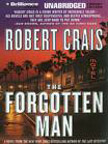
In The Forgotten Man, 2005, the tenth Elvis Cole novel, Robert Crais once again blends high-powered action and dark humor to excellent dramatic effect. Days of smart sleuthing work take the self-proclaimed "World's Greatest Detective" from a Venice Beach escort service to the California desert, and beyond:
Golden Escorts occupied a tiny clapboard house in Venice north of the canals, six blocks from the ocean. The neighborhood was typical of Venice, where microscopic houses were set on lots so narrow they shouldered together like cards in a deck. To the untrained eye, many streets in Venice looked like tenements, sporting broken sidewalks, beach-bum décor, and rent-a-wreck parking, but the cheapest house on the block would go for six hundred thousand dollars. Location was everything.
The house itself was a Craftsman knockoff sporting a tiny front porch, yellow paint, and a weather vane shaped like a whale.
A gentle onshore breeze carried the smell and the taste from the sea, six blocks away. A thin maritime fog swirled overhead, bright with reflected light. The fog dampened neighborhood sounds, and left the world feeling empty.
...............
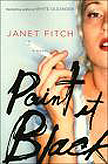
Janet Fitch was born in Los Angeles, a third-generation native, and grew up in a family of voracious readers. Her third novel, Paint It Black, 2006, is about the aftermath of a suicide, set in 1980 punk rock teen runaway art model L.A.:
The kid towered over her, awkward and simple with his bogus board, a junior from Venice High the photographer had found on the boardwalk.
... She drew her hand back and waited, calm but nervous under the calm. Like a painting they'd seen once in Venice Beach. It was a big abstract oil that was just green stripes. She never understood art like this, but Michael explained, "It's not a green painting, see? It's a red painting under a green one." He pointed to the edges, where the green didn't quite cover the red.
That was Elena. Red under green. Her rawness just visible around the edges.
|